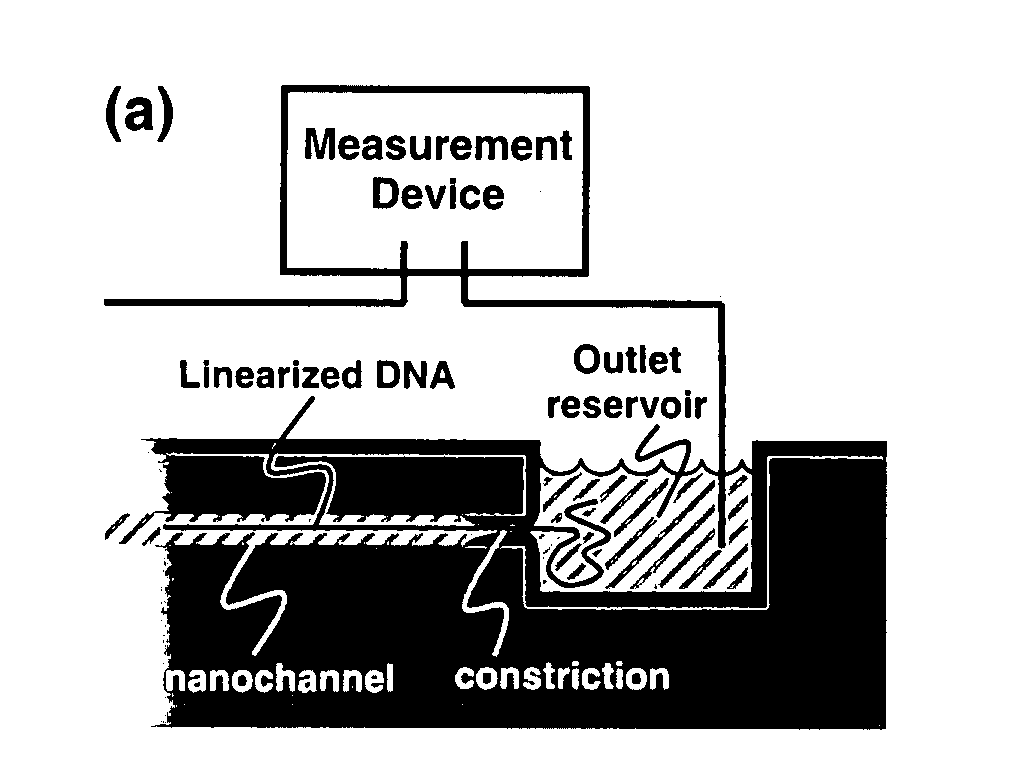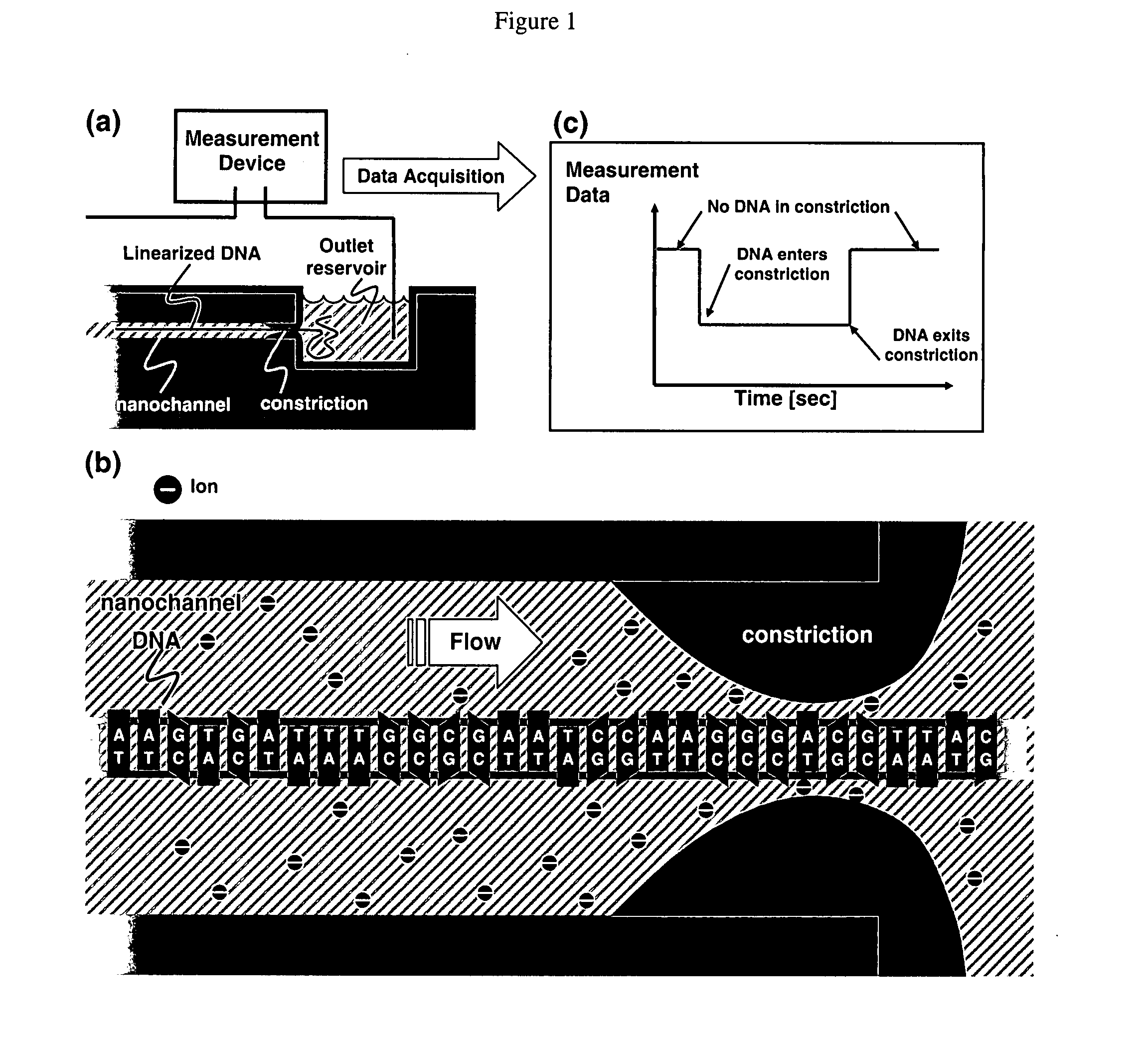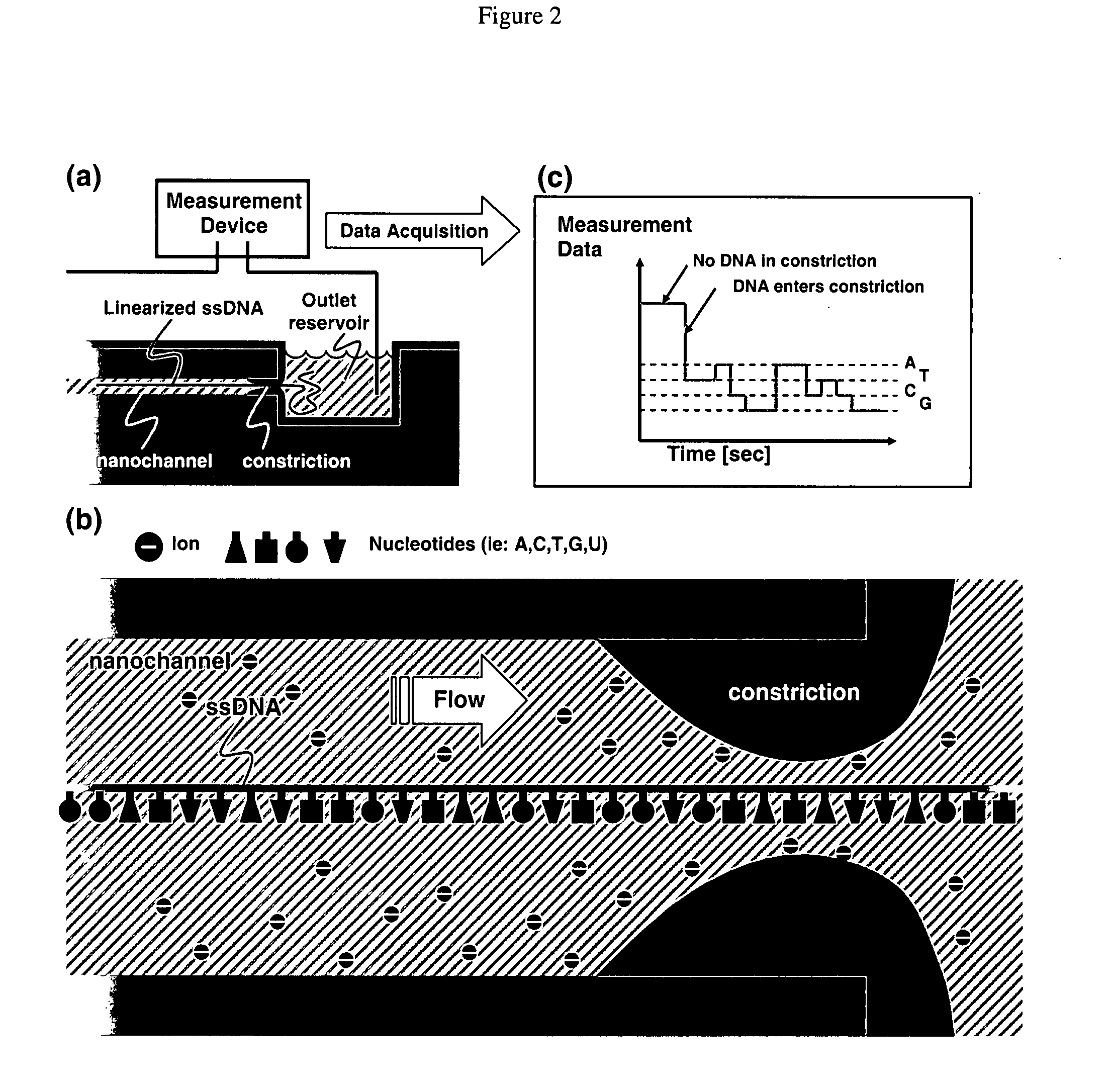Nanonozzle device arrays: their preparation and use for macromolecular analysis
a micromolecular analysis and nano-nozzle technology, applied in the field of nano-nozzle devices, can solve the problems of inability to easily integrate biological molecules with the semiconductor processes required for sensitive on-chip electronics, and the cost of most genome or epigenome analysis technologies is too high for general analysis of large genomic regions,
- Summary
- Abstract
- Description
- Claims
- Application Information
AI Technical Summary
Benefits of technology
Problems solved by technology
Method used
Image
Examples
example 1
[0092]A silicon substrate was provided having a plurality of parallel linear channels having a 150 nm trench width and a 150 nm trench height. These channel openings are sputtered at a gas pressure of 5 mTorr according to the general procedures given above. The sputter deposition time was 10-25 minutes to provide a nanochannel array that can either be partially sealed or completely sealed.
example 2
[0093]This Example provides an enclosed nanochannel array using an e-beam deposition technique. A substrate can be provided as in Example 1. Silicon dioxide can be deposited by an e-beam (thermo) evaporator (Temescal BJD-1800) onto the substrate. The substrate can be placed at various angles incident to the depositing beam from the silicon dioxide source target; the deposition rate can be set to about 3 nm / minute and 150 nm of sealing material can be deposited in about 50 minutes. The angle of the incident depositing beam of sealing material can be varied to reduce the channel width and height to less than 150 nm and 150 nm, respectively, and to substantially seal the channels by providing shallow tangential deposition angles.
example 3
[0094]In this example, a nanochannel array can be contacted with a surface-modifying agent. A nanochannel array made according to Example 1 can be submerged in solution to facilitate wetting and reduce non-specific binding. The solution can contain polyethylene glycol silane in toluene at concentrations ranging from 0.1-100 mM and remains in contact with the nanochannel array from about 1 hour to about 24 hours. Subsequent washing in ethanol and water is used to remove ungrafted material.
PUM
| Property | Measurement | Unit |
|---|---|---|
| Length | aaaaa | aaaaa |
| Length | aaaaa | aaaaa |
| Length | aaaaa | aaaaa |
Abstract
Description
Claims
Application Information
 Login to View More
Login to View More - R&D
- Intellectual Property
- Life Sciences
- Materials
- Tech Scout
- Unparalleled Data Quality
- Higher Quality Content
- 60% Fewer Hallucinations
Browse by: Latest US Patents, China's latest patents, Technical Efficacy Thesaurus, Application Domain, Technology Topic, Popular Technical Reports.
© 2025 PatSnap. All rights reserved.Legal|Privacy policy|Modern Slavery Act Transparency Statement|Sitemap|About US| Contact US: help@patsnap.com



